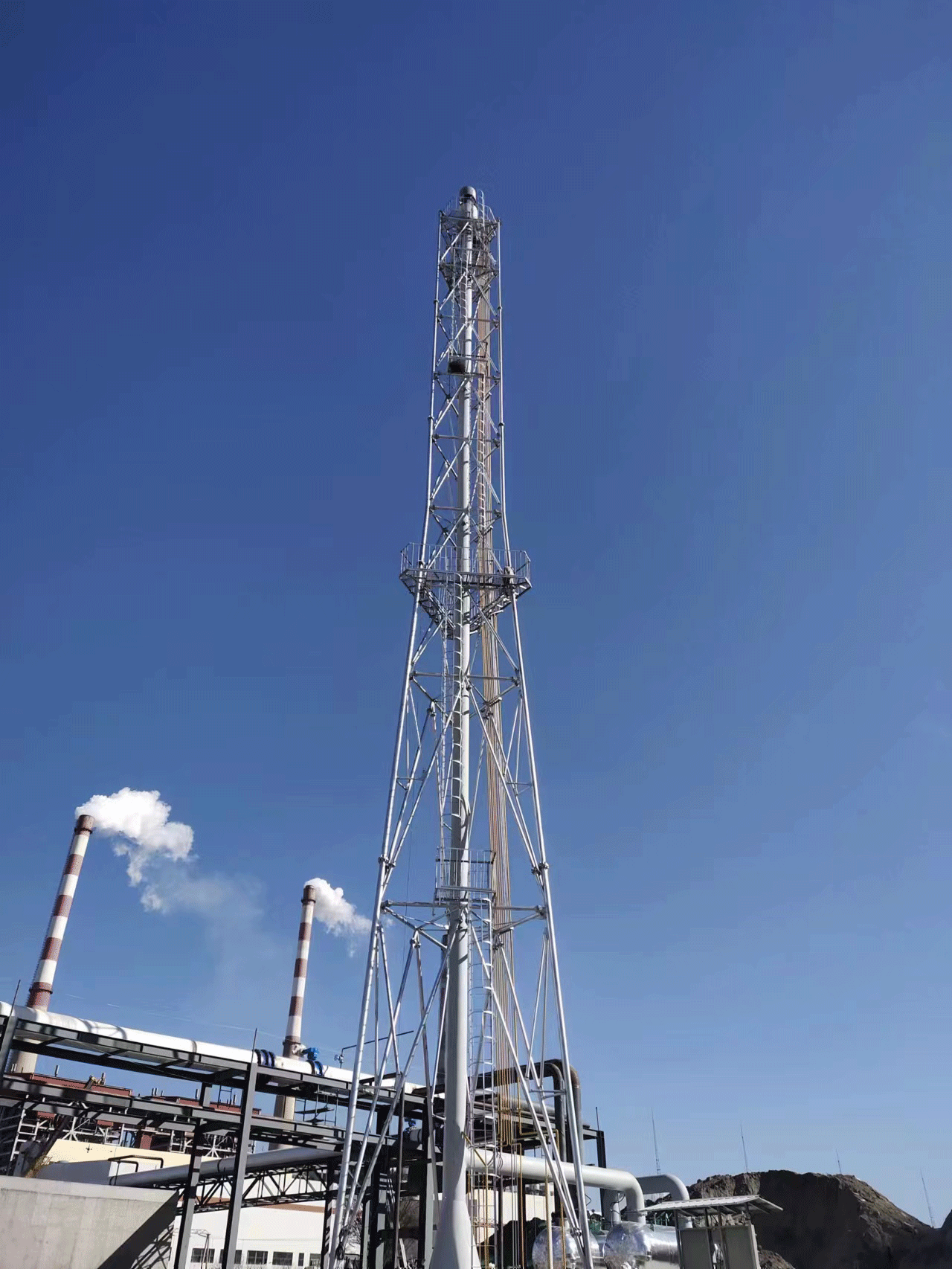
News
News Center Current Location: Home > News > Technical Articles
Current Location: Home > News > Technical Articles
 last updated:2025-02-28
last updated:2025-02-28 Website Traffic:
Website Traffic: Technical Principles and Composition of Elevated Flares

1. Technical Principles
Elevated flares are critical safety devices used in industries such as petrochemicals, natural gas processing, and refining. Their primary function is TO safely combust and dispose of excess or emergency-released flammable gases, preventing environmental pollution and ensuring operational safety. The technical principles include:
- Combustion Process: Flammable gases are ignited and burned at the flare tip, converting harmful substances (e.g., VOCs, H₂S) into harmless byproducts like CO₂ and H₂O through high-temperature oxidation.
- Heat Radiation Management: The elevated structure ensures safe dispersion of heat and combustion products, minimizing ground-level impact.
- Pressure Relief: The flare system provides a controlled pathway for releasing excess pressure from process equipment, preventing overpressure incidents.
2. Composition of Elevated Flares
1. Flare Tip
- Function: The flare tip is designed to ensure complete combustion of gases.
- Features: Multi-nozzle or steam-assisted design to improve combustion efficiency and reduce smoke formation.
2. Flare Stack
- Function: Supports the flare tip and ensures safe dispersion of combustion products at a sufficient height.
- Material: Made of high-temperature-resistant materials such as stainless steel to withstand extreme heat and corrosive gases.
3. Ignition System
- Function: Provides reliable ignition for the flare.
- Components: Includes pilot flame, high-energy ignition, and flame detection systems to ensure continuous and safe operation.
4. Gas Piping and Knock-Out Drum
- Function: Transports gases to the flare and removes liquids or particulates to prevent flare tip blockage.
- Components: Piping network, liquid separation drum, and drainage system.
5. Control System
- Function: Monitors and controls flare operation.
- Components: PLC/DCS systems for real-time monitoring of pressure, flow, and flame status, with automatic safety interlocks.
6. Support Structure
- Function: Provides structural stability to the flare stack.
- Design: Self-supporting towers or guyed masts, designed to withstand wind, seismic activity, and other environmental factors.
7. Auxiliary Systems
- Steam Injection: Reduces smoke formation by improving combustion efficiency.
- Nitrogen Purge: Prevents air ingress and potential flashback.
- Radiation Protection: Shields nearby equipment and personnel from heat radiation.
3. Key Advantages
- High Efficiency: Combustion efficiency ≥98%, ensuring complete destruction of harmful gases.
- Safety: Advanced safety features such as flame arrestors, pressure relief valves, and emergency shutdown systems.
- Environmental Compliance: Meets strict emission standards, minimizing environmental impact.
Elevated flares are essential for maintaining safety and environmental compliance in industrial operations, providing reliable and efficient disposal of flammable gases.